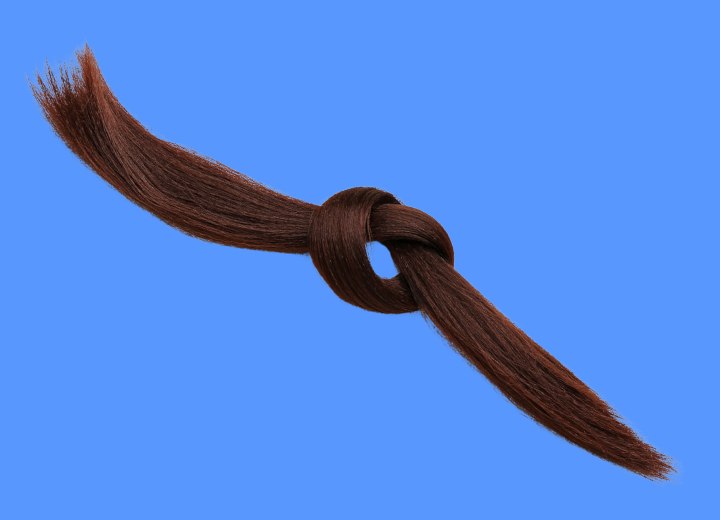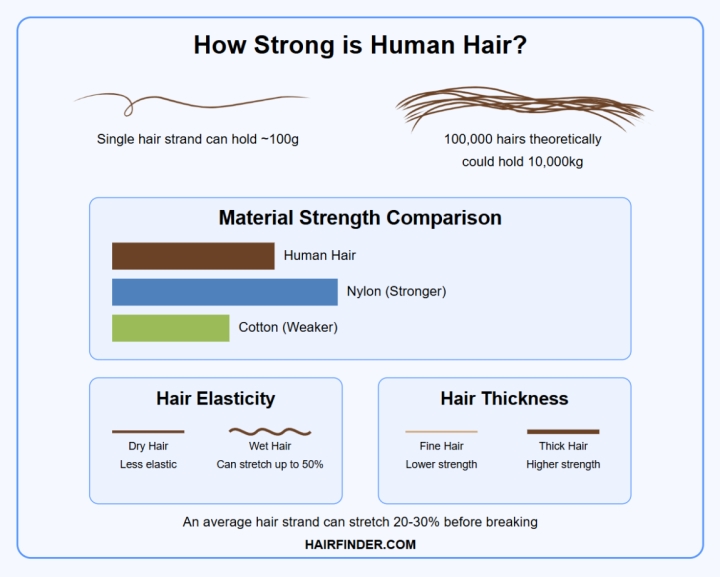The Strength of Human Hair

Q: I know that human hair is quite strong, but how strong is it exactly? How does it compare to other materials such as rope or knitting wool?
A: Human hair is surprisingly strong despite its thin and fragile appearance. It has a unique biological structure with a combination of strength and resilience. The ultimate strength of a hair strand depends on various factors, including its thickness and health, and varies among individuals.
However, compared to some synthetic fibers, human hair is not as strong. In terms of tensile strength, for example, nylon generally exceeds human hair. Nylon fibers can withstand much higher pulling forces compared to hair strands. Nylon is a synthetic product known for its high tensile strength and elasticity. On the other hand, human hair, with its biological structure, has unique properties that differ from synthetic materials.

Cotton, a natural vegetable fiber, has a lower tensile strength than human hair. Cotton fibers are softer and more pliable, making them suitable for textiles and clothing, but they are not as strong as human hair. Wool, derived from sheep or other animals, has better tensile strength compared to cotton, but it is generally still lower than that of human hair.
The thickness of a hair strand determines its strength. Thicker strands generally have greater tensile strength than finer ones. Think of the comparison between a thin thread and a thick rope. The rope can carry more weight due to its larger cross-sectional area. Therefore, people with thick hair generally experience less hair breakage compared to those with finer hair.

The strength of hair also varies depending on its health. Well-hydrated and undamaged hair is stronger than dry or damaged hair. Regular care, such as using conditioner and avoiding excessive heat styling or chemical treatments, can contribute to the strength of the hair.
The amount of stretch before hair breaks varies. On average, human hair can stretch up to 20-30% of its original length before reaching its breaking point. Wet hair can stretch up to 50% or more of its original length. Dry hair, on the other hand, has lower elasticity. It is more brittle and less stretchable than wet hair.
©Hairfinder.com
See also:
How fast does hair grow?
What exactly is hair made of and how does it grow?